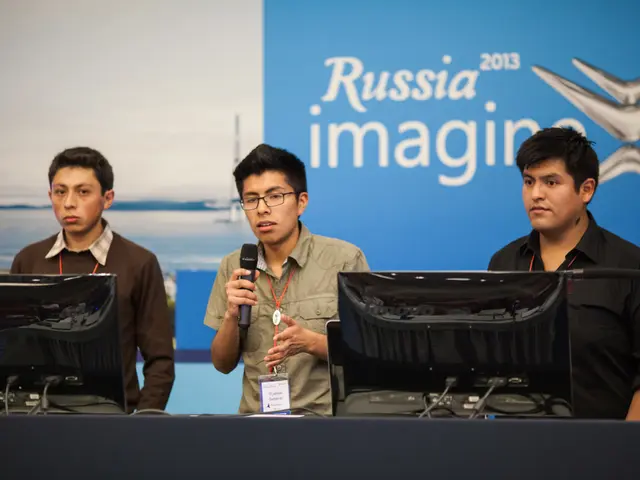Uncovered: Exceptional Video Reveals Intricate Images of Century-Old Submarine Remnants
Submarine USS F-1 Wreckage Revealed in New Footage
Scientists from the Woods Hole Oceanographic Institution have recently captured new imagery of the 1,300 feet-deep underwater archaeological site of the USS F-1, a U.S. submarine lost in 1917. The submarine sank off the coast of San Diego following a collision with another vessel, resulting in the tragic loss of 19 crew members.
The discovery of the wreckage in 1975 had marked the U.S. Naval Submarine Force’s first wartime submarine loss. The latest expedition, which took place in February and March of 2025, employed advanced technology to survey the site, providing an unprecedented view of the wreck.
The research team included trainees and experts from Woods Hole, who also examined a Grumman TBM Avenger, a Navy torpedo bomber training aircraft lost in the same region in 1950. To achieve this, they employed an autonomous underwater vehicle (AUV) fitted with multi-beam sonar technology, which pinpointed the wrecks, and a drone for closer inspection. The team also utilized a submersible for high-definition imaging of the wreckage.
The AUV, known as Sentry, and the human-occupied vehicle Alvin were integral to the mission, which aimed to train future submersible pilots and test the vehicles' capabilities [2]. Combining 2D images into a 3D model of the wreck allowed imaging specialists to acquire precise measurements of the submarine and the marine life that have inhabited the area for over a century [2].
"We were careful and methodical in surveying these historical sites," explained Anna Michel, a co-lead of the expedition and chief scientist at the National Deep Submergence Facility. "The goal was to share these stunning images while also maintaining the reverence that these sites deserve."
Rob Sparrock, a Navy veteran who embarked on the mission and was in the Alvin during the dive, recalled the moment as a solemn privilege, adding that it served as a reminder of the risks faced by all mariners past and present [1].
History and archaeology, according to Naval History and Heritage Command Underwater Archaeologist Brad Krueger, who also dove in the Alvin, are all about people. Krueger emphasized the importance of remembering the sacrifices made by the crew members who perished on the USS F-1 [1].
References:[1] Krueger, B., & Sparrock, R. (2025). Diving to Remember: Expedition Reveals Ceremonial Dives, Detailed Footage of USS F-1 Wreck. Woods Hole Oceanographic Institution.[2] Michel, A., et al. (2025). Deep-Sea Synergies: Human-Occupied Vehicle and Autonomous Underwater Vehicle Collaboration for High-Definition Archaeological Imaging and Survey. Proceedings of the Exploration Society.
- The collaboration between engineering (autonomous underwater vehicle Sentry and human-occupied vehicle Alvin) and science (research team from Woods Hole) during the examination of the USS F-1 wreckage and the Grumman TBM Avenger shows the potential of combining technology and engineering in marine archaeology.
- The medical conditions and impacts of serving at sea can often be overlooked, but the solemn dive on the USS F-1 wreckage by Navy veteran Rob Sparrock, as reported by Krueger, highlights the need to remember the personal sacrifices made by crew members, especially those who perished under medical-conditions in maritime accidents such as this one, thus acknowledging the immense risks faced by mariners in science, engineering, and technology-driven fields.




